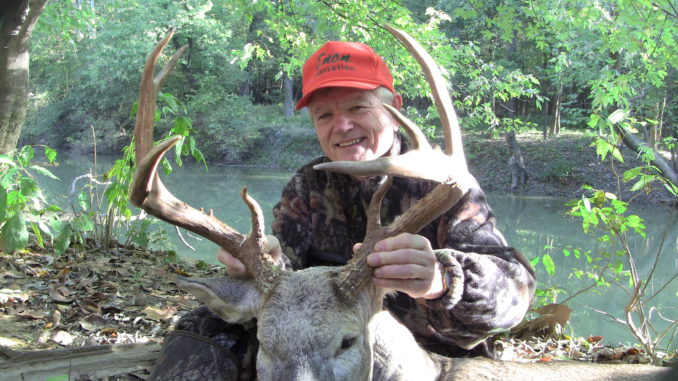
Williamsburg County hunter is big believer in vocalization
Hunters will do anything they can to get a big buck within bow or gun range, but there is one technique that is used to great advantage by some, but totally overlooked or misused by many: vocalization – talking to the deer.
Willie McCutchen, a 65-year-old part-time magistrate in Williamsburg County, has hunted deer since he was 8. His passion is bow hunting, and while he uses vocalization to get deer close enough for a bow shot, he said it works great for gun hunters, too.
“It’s easy to overdo calling so I recommend hunters begin the deer calling low-key,” he said. “Vocalization is not a cure-all and won’t cover up mistakes in terms of wind direction and scent control. However, a few grunts or bleats will often arouse the curiosity of a buck looking for a doe. When that occurs, you can enjoy a wonderful experience.”
McCutchen said this has been a good year already and we’re now in the prime time for vocalization.
“I grunted in and killed my biggest buck ever with a bow this year,” McCutchen said. “Vocalization is essential to my game plan, but make no mistake, it is only a part of the process, but one that’s crucial. There is a time for vocalization and a time to be quiet.”
McCutchen said his big buck was a perfect example. He had already killed a big doe w that afternoon, and a massive buck walked into view, then walked to the dead doe.
“He stood there for a few minutes, then turned to leave, and I grunted to him,” he said. “The buck immediately turned and looked in my direction but couldn’t see the source of the call. He turned away, so I grunted again. This time he had my location and began to circle me to get the wind advantage. I lost sight of him, and it was getting late; the wind died and all was quiet. Since I could not see the buck but felt he was lurking close, I kept quiet and watched. Finally, he stepped out less than 20 yards from me. He had come directly to the source of the grunt.”
McCutchen will grunt or bleat when no deer are in sight, but even though he’s harvesting deer on many of those days, he cannot say with certainty it was his calling that produced the deer – although he said it’s likely that it sometimes played a role.
“Knowing vocalization works is confirmed by seeing the deer first,” he said. “I position myself in a climber so I can see potential hotspots,” he said. “When I see a deer, I’ll either bleat or grunt, and actually, I give the edge to the bleat to call bucks. I use a bleat can or my natural voice. It is amazing how many times I’ll see a buck and will bleat once to get his attention. When I get his attention I will call once more so he can get a location. Many times these bucks have walked straight to me and given me the opportunity to take them with a bow.
“I grunt the same way in terms of using it to get their attention and then another to give them a location,” he said. “If I see a buck walking away, I may grunt two or three times, a bit more aggressively, to get them to turn. Sometimes, it doesn’t appear to work, but they walk off, only to show up again later looking for the sound from a different place.”
McCutchen said that rattling can be a good form of sound-making, even though it’s not really vocalization.
“If the buck-doe ratio is right, rattling at this time of year can be awesome,” he said. “I’ve had many times where I hardly put the rattling antlers down before I saw a buck coming to my location. But my home range in Williamsburg County has lots of does, so it’s not as productive there. But in the right situation, rattling is lethal in the rut.”
“Another call I carry is the snort-wheeze,” he said. “To me, this is a buck challenge call, a buck-to-buck vocalization. I’ve seen a big buck use it to run off a smaller buck. But a hunter can use it to challenge and call in a big buck.”




Be the first to comment